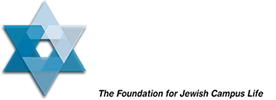In this Torah portion, God instructs Moses to accept gifts from the Israelites, which are to be used in constructing the tabernacle. Acceptable gifts include precious metals and stones, tanned skins, blue, purple, and crimson yarns and linen, and special oils and spices.
God tells Moses the blueprints according to which the Tabernacle and its contents are to be built. The first object to be constructed is the Ark, which should be built of acacia wood, overlaid both inside and out with gold. The tablets of the Law (which God will give Moses) are to be kept in the Ark. Two gold cherubim (winged angelic beings described in biblical tradition as attending on God)are to be placed facing each other over the cover of the Ark. The Ark is to be housed in the innermost chamber of the Tabernacle, called the Holy of Holies.
There is a prohibition to remove the poles of the Ark. The commentator Kli Yakar regards the permanent attachment of the poles to the Ark as symbolic of the unbreakable links between Israel and Torah. Rabbi Hirsch regards the prohibition to remove the poles as symbolic of the mobility of the Torah. He states: “The poles of the Ark symbolize, the mission of the Ark and what it housed – to be carried beyond its place to wherever circumstances demanded.” The commandment: “the poles shall not be removed” embodied the eternal message that the Torah is not restricted to the particular country where the Temple is situated.
The combination of the Kli Yakar’s idea that there must be a eternal connection between the people of Israel and Torah, and Rabbi Hirsch’s idea that the Torah is independent of place is only one more vehicle for reinforcing the importance of, and ability to make Torah a daily part of our lives.

